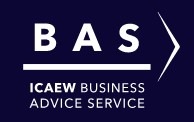You’ve heard the phrase that starts ‘turnover is vanity’ many times. When it comes to agencies, staff headcount and number of clients could be included with turnover.
When we accountants first meet a prospect, we’ll often ask for these numbers but we’re trying to gauge the size and complexity of a business. These numbers can be proudly stated as a measure of success and a sign of growth, but the trouble is that they don’t always translate into what matters the most:
- A healthy profit margin.
- A healthy bank balance.
- A satisfactory income and return for the founder(s).
This is because:
- Turnover can include direct client costs either recharged to clients or covered in the total all-in fee. Agencies can incur high client costs, including those that sell media or are in events. A more realistic measure is for revenue to only include fee income and markup on client costs. Even when measured this way, an increase in revenue may not mean increased profits.
- Headcount doesn’t measure how effective and efficient the team are at generating revenue and profit from client work. Having an increased headcount doesn’t necessarily result in increased revenue and profit.
- An increasing number of clients doesn’t lead to increased profits if the agency fails to deliver client work profitably. This can be due to clients not being the right fit, or projects being underpriced or under-scoped.
Focus is needed on the metrics that allow agency owners to better understand the finer detail of business performance and help them make informed decisions to enable improvement. Some alternative metrics to turnover, headcount and the number of clients are included below.
Alternative turnover/gross revenue metrics
Net revenue – excludes direct client purchases and expenses, leaving fee income and markup on costs.
Net revenue growth – the change in net revenue from one period to another, for example by month or quarter.
Net revenue per head – the average net revenue earned per chargeable member of staff.
Alternative employee headcount metrics
Chargeable staff cost ratio – chargeable staff costs as a proportion of net revenue, expressed as a percentage or pence per pound.
Contribution per head – the average profit made after direct staff costs but before overheads, per chargeable member of staff.
Staff cost per head – the average employment cost per chargeable head, including employer National Insurance and pension.
Utilisation – the proportion of time, expressed as a percentage that chargeable staff spend on client work that is potentially billable. This requires time to be tracked by billable staff.
Alternative client metrics
Client net revenue – the net revenue earned for each client.
Client profitability – the contribution margin made for each client. This requires billable staff to make time entries.
Client recovery – the time spent on chargeable work that gets billed to each client, expressed as a percentage. Another metric which requires timesheets to be entered.
We include all of these sanity metrics in the management accounts and forecasting we prepare, where possible (subject to time being tracked). Please get in touch if you’d like to learn more about how we can help you understand and improve your operational performance and efficiency.


